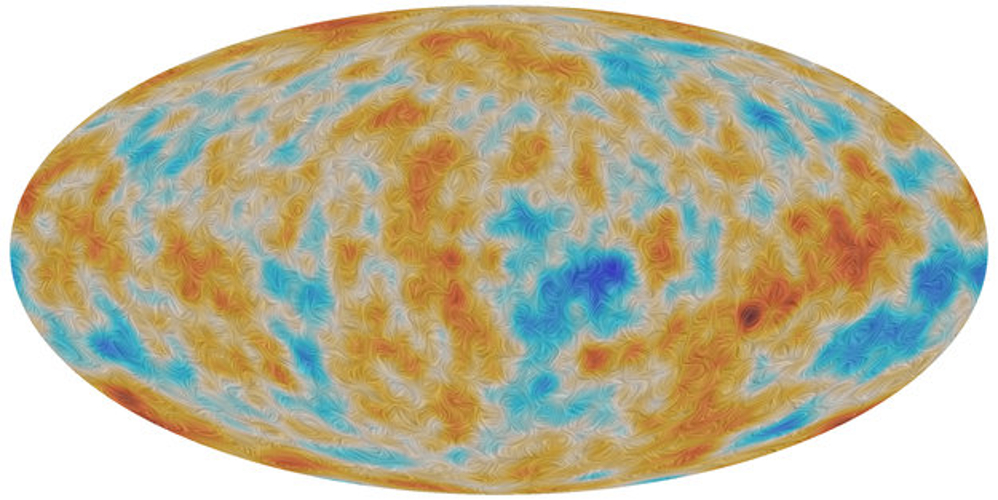
 Credit: ESA and the Planck Collaboration
Credit: ESA and the Planck Collaboration
A New Slant on the First Stars
The cosmic
microwave background is the remnant light generated at the birth of the
Universe. It dates from the time when the Universe became
"transparent", a time when the Universe cooled enough that electrons could
recombine with protons and helium nuclei to form neutral atoms. This occurred
roughly 380,000 years after the Big Bang. The cosmic radiation at this time no
longer collided frequently with unbound electrons, and began to stream to the
farthest reaches of the Universe. On its cosmic journey, the wavelength of this
radiation stretched with the expansion of the Universe, until, after its
13.4-billion year journey, we observe it here on earth as long-wavelength
microwave radiation. This radiation has been studied in increasing detail from
space by the COBE, WMAP and Planck
satellite observatories. The Planck satellite has provided us with the most
precise measurements of the cosmic microwave background, revealing important new
details of the Universe at the earliest times. The image above is an all-sky map
of the cosmic microwave background obtained by Planck. As the Planck map shows,
there are some slight variations in the color of this radiation: in the bluer
regions, the wavelength of cosmic background radiation is a little shorter than
it is in the redder regions. This reveals the extremely slight temperature
decrease between the blue and red regions. If you look closely, you can see that
the map is textured. This texture represents the local polarization
of the cosmic background radiation, which is a measure of the dominant direction in which the wave of
radiation oscillates. This net polarization is imprinted on the cosmic
background radiation by the distribution of matter at the time when the
radiation began its cosmic journey. Careful study of this polarization signal
provides important new clues about the evolution of the early Universe, and
indicates, for example, that era of formation of the first stars was a few
hundred million years later than previously believed. Because of the advances
provided by the Planck spacecraft, the ESA Planck team has been awarded the 2018
Gruber Cosmology Prize.
Published: May 21, 2018
<
HEA Dictionary ● Archive
● Search HEAPOW
● Other Languages
● HEAPOW on Facebook
● Download all Images
● Education ● HEAD
>

Each week the HEASARC
brings you new, exciting and beautiful images from X-ray and Gamma ray
astronomy. Check back each week and be sure to check out the HEAPOW archive!
Page Author: Dr. Michael F. Corcoran
Last modified Monday, 26-Feb-2024 17:36:24 EST


